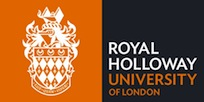Speaker
Dr
Lea Reichhart
(University College London)
Description
A large number of astronomical and cosmological observations point towards the existence of an unknown dark component dominating the matter content of our Universe. The most compelling candidates for dark matter are Weakly Interacting Massive Particles (WIMPs), which may be detected in low background experiments located deep underground, searching for direct interactions of WIMPs with dedicated target materials. The Large Underground Xenon (LUX) experiment, operated in the Davis Campus of the SURF laboratory, USA, has announced results from its first science run in late 2013. From an exposure of 85 live days, having found no evidence of signal above expected background, LUX has set constraints on scalar WIMP-nucleon interactions above 7.6$\times$10$^{-46}$ cm$^{2}$ at 33 GeV/c$^{2}$ WIMP mass (90% CL). The sensitivity for light WIMPs (<10 GeV/c$^{2}$) is some 20 times higher than that of any other experiment, and the LUX result seriously challenges the interpretation of hints of signal claimed by other experiments as arising from low-mass WIMPs.
Primary author
Dr
Lea Reichhart
(University College London)




